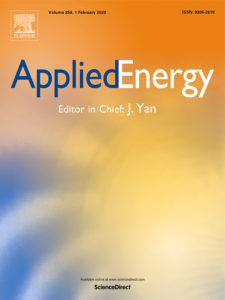Future Energy Scenarios with Distributed Technology Options for Residential City Blocks in Three Climate Regions of the United States
Future Energy Scenarios with Distributed Technology Options for Residential City Blocks in Three Climate Regions of the United States
- February 2019
- Peer-Reviewed Articles
- Shengxi Yuan, Wendell Stainsby, Mo Li, Kewei Xu, Michael Waite, Dan Zimmerle, Richard Feiock, Anu Ramaswami, Vijay Modi
 Yuan, S., Stainsby, W., Li, M., Xu, K., Waite, M., Zimmerle, D., Feiock, R., Ramaswami, A., & Modi, V. (2019). Future energy scenarios with distributed technology options for residential city blocks in three climate regions of the United States. Applied Energy, 237, 60-69.
Yuan, S., Stainsby, W., Li, M., Xu, K., Waite, M., Zimmerle, D., Feiock, R., Ramaswami, A., & Modi, V. (2019). Future energy scenarios with distributed technology options for residential city blocks in three climate regions of the United States. Applied Energy, 237, 60-69.
ABSTRACT: To reduce greenhouse gas emissions, the electricity sector is going through two main transitions. First, the electric grid is integrating variable renewable generation, such as wind and solar. Second, demands are changing as heating systems are shifting from gas-based to high efficiency electric heat pumps. This paper provides a comparative analysis of future energy scenarios with distributed technology options including (1) wind and solar generation; (2) heat pumps for heating and cooling; and (3) battery and thermal storage in representative residential blocks in four cities, including New York City, New York; Minneapolis, Minnesota; Tallahassee, Florida; and Fort Collins, Colorado. These cities are located in three climate regions with different weather patterns which result in different demand profiles and different local renewable resources. Future energy demand scenarios with 100% penetration of air source or ground source heat pumps for heating and cooling are estimated for the four residential city blocks. Under a future scenario with all electric demand with air source heat pumps and high renewable energy penetration, this study finds that (1) the optimal wind and solar generation mix varies with location and amount of storage and (2) battery storage is more cost effective than thermal storage, ground source heat pumps, and overbuilt renewable generation.




